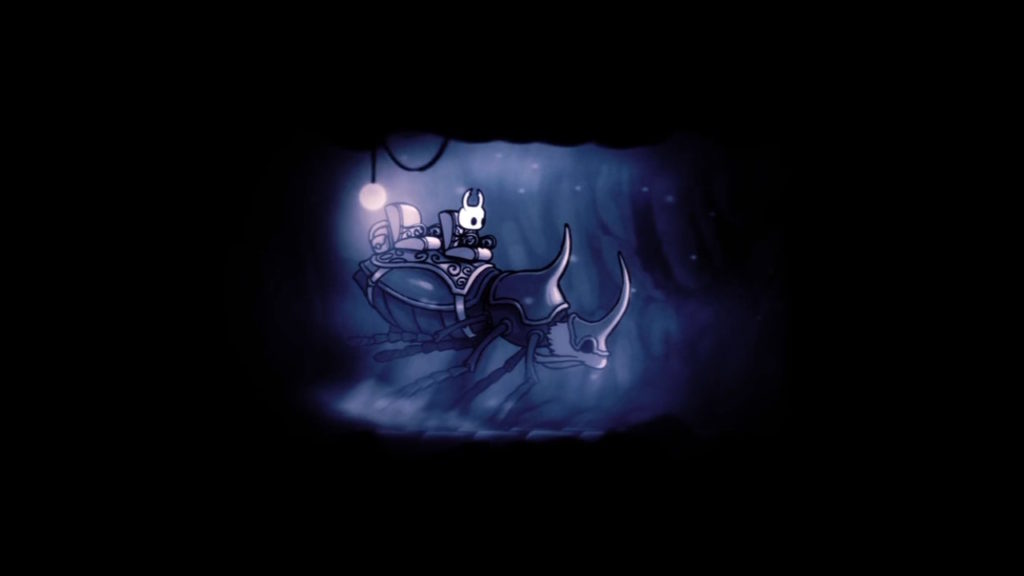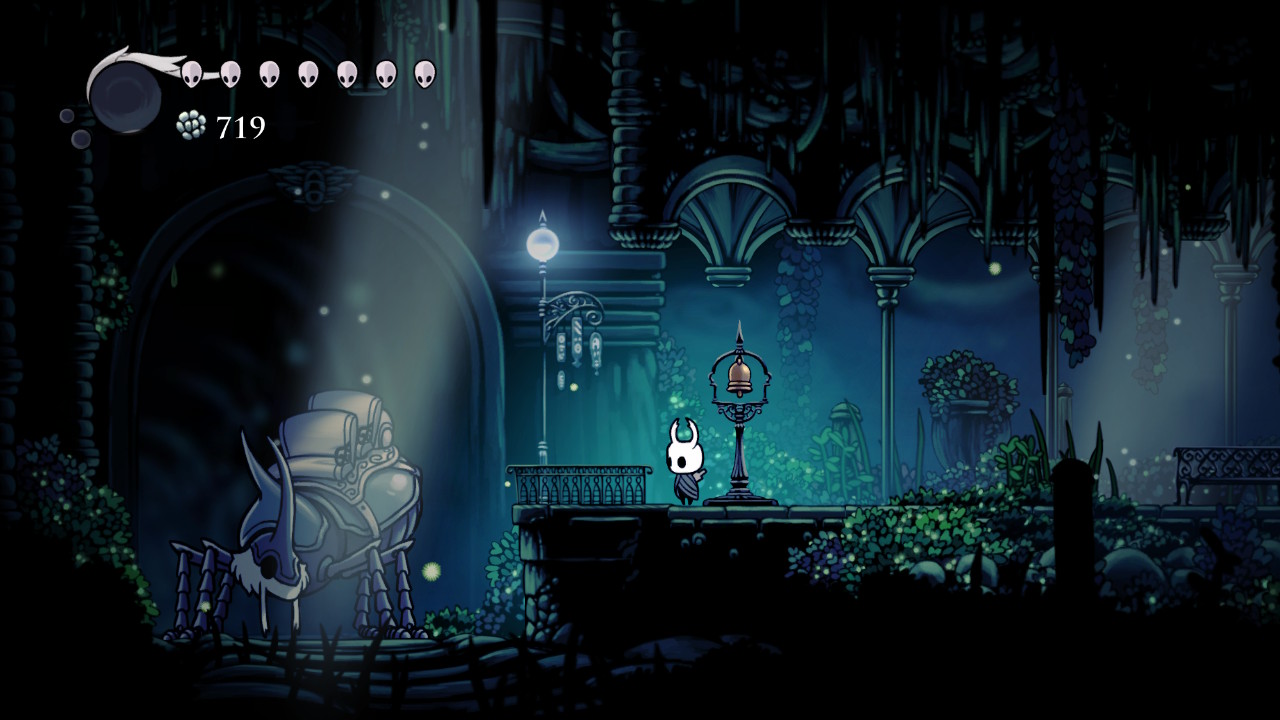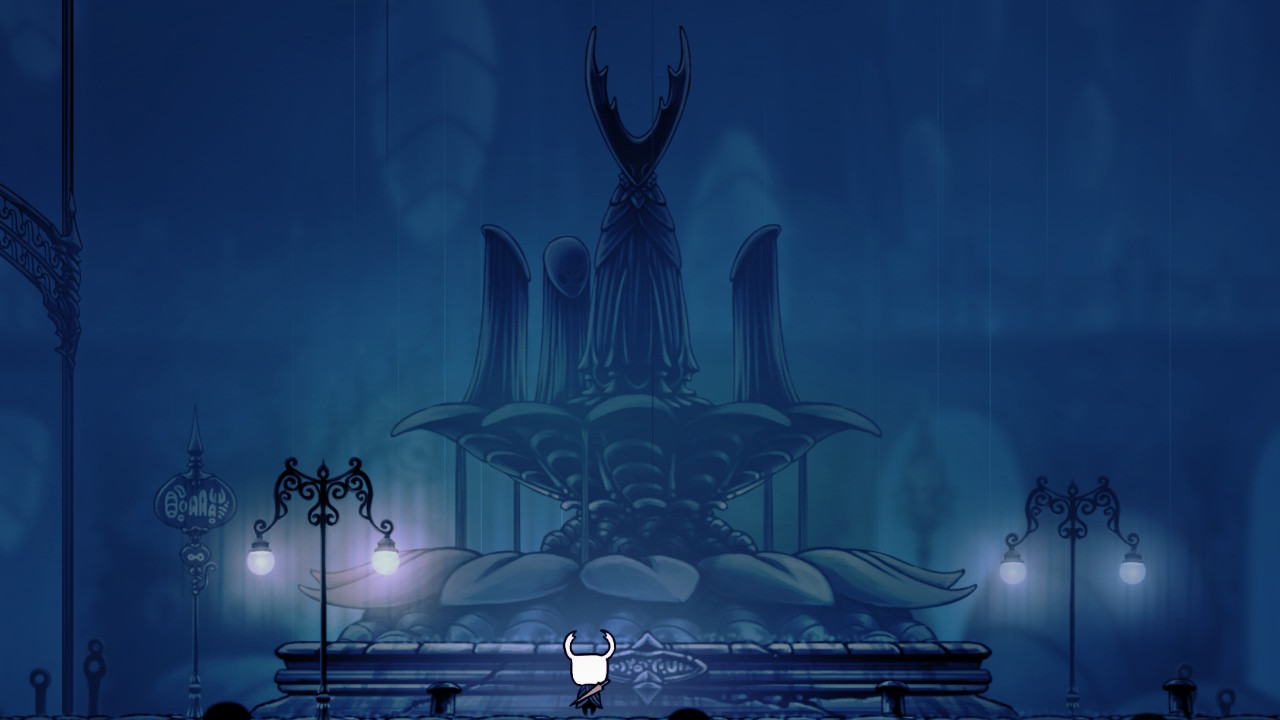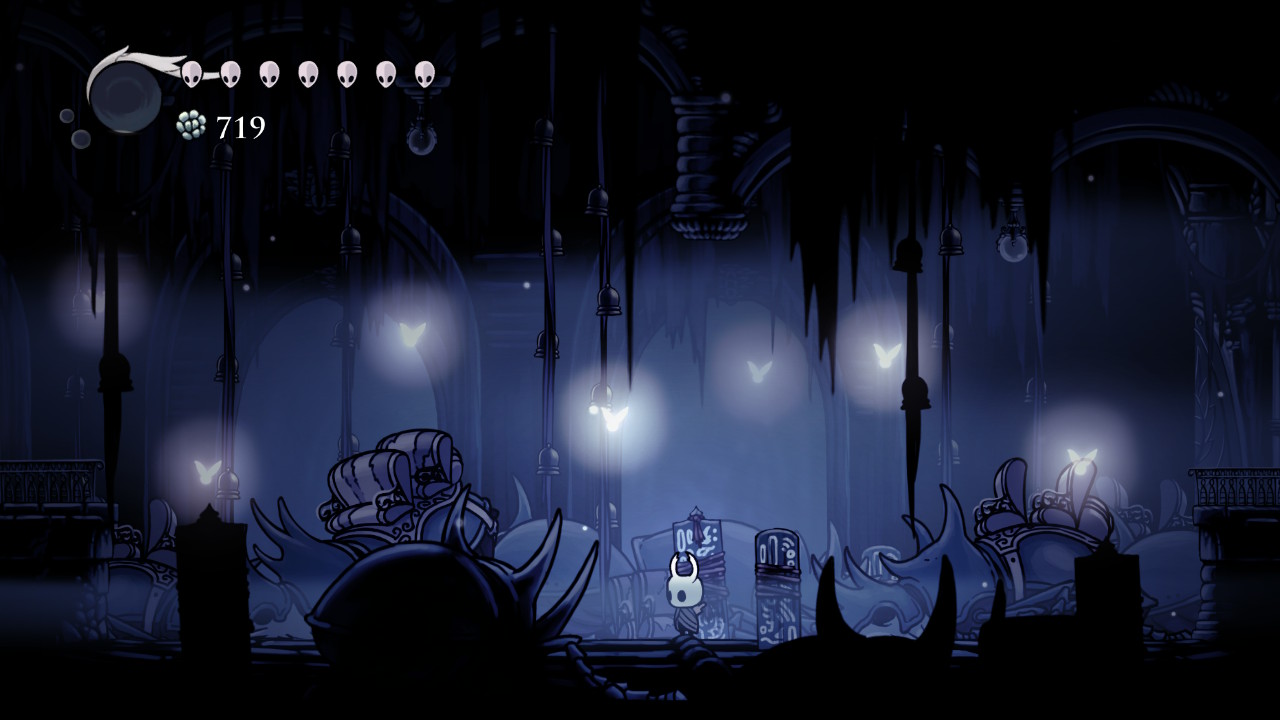
Screenshot provided by author
The Wistful Optimism of Hollow Knight’s Last Stag
How a fast-traveling beetle brightens Hallownest’s darkest corners
Spoiler Warning: Hollow Knight
The world of Hollow Knight has seen better days. Hallownest, the self-proclaimed “last and only civilization,” is in ruin. Its capital, The City of Tears, is drenched in never-ending rainfall. Nearly everything that moves is a zombified corpse, shambling aimlessly only until it attacks the living. Corrupt lesions bubble spontaneously from the walls, threatening to burst. A sea of living shadow, writhing and thrashing at anyone who dares approach, lies deep below its surface. The massive scale of it all, once a projection of its wealth and influence, now renders all the sprawling caverns even more, well, hollow.
Thanks in large part to the colossal impact of Dark Souls, more than a few indie imitators are set in similarly ruined civilizations, from the paranoid monarchy of Dead Cells to the gruesome religion of Blasphemous. Hollow Knight, though, manages to present a version of the fallen world that’s approachable, even warm in comparison.
At first glance this might seem counterintuitive. After all, Hallownest is no walk in the park. But there’s more than just a dark void waiting to inherit the world in its wake. In places order is being overtaken by nature, unkempt but beautiful. Elsewhere its increasingly hazy borders bump up against societies that bustle and hum in their own right. But more importantly, Hallownest itself is still home to plenty of living people, many of whom harbor hopes, however modest, for the future. This small but diverse populace includes a curious mapmaker, a reclusive historian, a furtive grifter, a masked adventurer known simply as the Knight, and — running through tunnels the size of highways — an old Stag.

“Stiff and tired,” in his old age, the Last Stag is the last of his kind still traveling Hallownest’s transportation network, the Stagways. And though he admits, “It’s been an age since I last heard the ringing of a station bell,” when the Knight first hails him from a Stag Station, he answers the call immediately. Somehow, in the years since the fall of Hallownest, as he wandered the empty halls and his memory began to falter, he never gave up his responsibility.
Now, though, the Knight’s quest gives him reason to venture across the old kingdom once again, and the journey is revitalizing. “As I visit more places I feel my memories returning to me,” he remarks, “like the Stagways of my mind are running once more.” And run they do. While the two crisscross their way back and forth through Hallownest, the Stag spends some time reminiscing on his youth. He also expresses concern, both for the fate of the world and—as their friendship grows—the diminutive Knight. Most illuminating though, are his insights on the events that led to the kingdom’s downfall.
Because firsthand accounts of what befell Hallownest are so scarce, every one of them is valuable. Most often though they’re limited to the perspectives of the powerful — “higher beings” like The White Lady or The Pale King. In contrast, the Stag’s position as a humble worker renders his version of the story both rarer and sharper. In a storeroom for the City of Tears he recalls how wealth became concentrated in the capitol. “Goods from all over the kingdom were transported here. Not a lot was sent back the other way though.” Later, when he comes across a leg of Hallownest’s uncompleted tram system, he chafes at the movement toward automation. “The thought a mere machine could attempt what we stags do! Foolish…Very foolish.”

While the duo explores The City of Tears in its perpetual downpour, one thing becomes unavoidably clear: the world itself is mourning. What’s worse, because it’s been so long, almost nobody left alive can grasp the totality of the loss. But in the Stag the world finds a mirror. Not only have all his kin long since disappeared, but he no longer knows the route to his ancestral home, the Stag Nest. With every step he takes though, he begins to realize he’s getting closer to remembering again. And sure enough, as the Knight rings the bell at the final station, the Stag rushes down the line to meet his friend. For the first time in a long time, he’s found the way home, and he’s ready to go.
Upon arriving at the cavernous nest there’s no life to be found, only the corpses of stags scattered in piles across the floor and the echoes of water droplets hitting the massive, stag-sized lifts. But, hidden away in a remote corner, there is a glimmer of hope: a single egg, cracked open. It’s not much, but for the ever hopeful Stag it’s enough to make him wonder, “… there’s something in the air. A smell, or a warmth, or a presence perhaps? Could it be, other stags have made their way out into the wider world?”

Maybe his optimism is misplaced, and a young stag couldn’t possibly survive the hostile world alone. Maybe his steadfast devotion to purpose is futile, a stubborn refusal to adapt to his changing surroundings. It’s possible that same devotion is what drove his kind to the edge of extinction. But for the Stag, holding on to responsibility is just his way of holding out hope. And in finding his way home, he found a chance, however slim, that his hope isn’t in vain.





